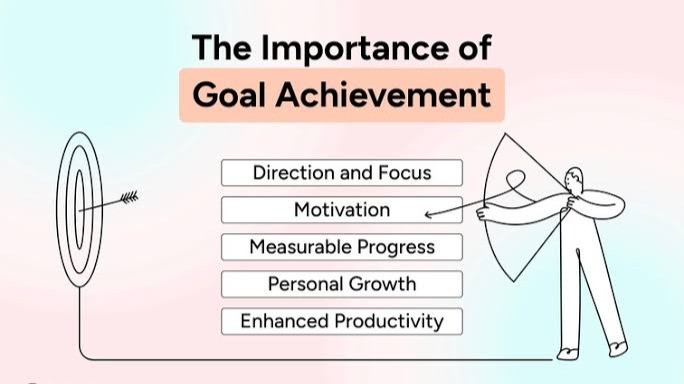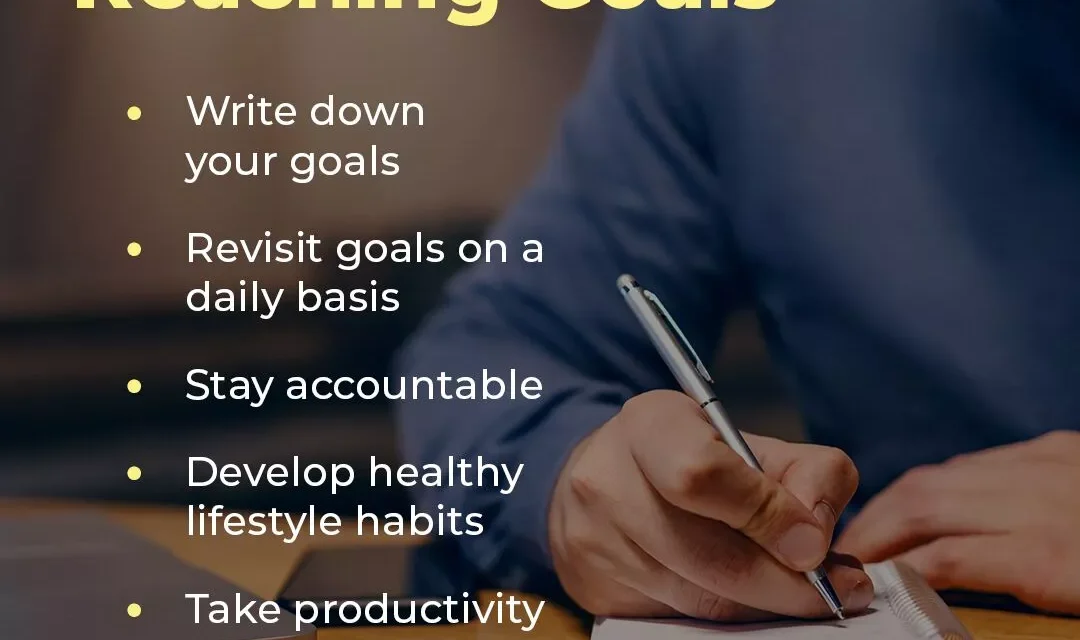Table of Contents
Introduction to Productivity
This additional demand impacts everyone, which is why the modern world is more focused on productivity than ever. The reality is that you are not alone: be it a busy professional or someone managing multiple responsibilities at home, everyone is seeking efficient means to navigate through their work to improve their overall concern.
But what if everything could be done faster and with much better results while retaining balance in life? This proposition is extremely alluring, but it requires clear outline goals alongside practical guidelines pertaining to staying concentrated on your work towards actualized aspirations. Streamlined productivity is attainable if you know how to identify hurdles along your journey and learn how to conquer them.
Now let’s explore the strategies that will boost productivity and allow you to unleash your potential!
The Importance of Setting Goals for Productivity

Goal setting is essential for maximum productivity. Without a defined focus, baseline productivity suffers. Goals serve as guides, directing action towards needs.
Define goals and purposes for each task to be accomplished within a timeframe. This galvanized determination sustains productivity throughout the entire day.
Goals also serve as standard metrics for evaluating quantifiable progress.Allowing one to celebrate incremental milestones along the way improves morale while reinforcing commitment. Tracking an individual’s achievements facilitates this incremented celebration.
Furthermore, overwhelming goals are the product of unrealistic outlooks.Less ambitious goals can be broken down into multiple smaller, achievable tasks. This minimization of procrastination fuels consistent effort.
All these factors when combined allow a person to have unique well defined plans, enabled decisions, and enhanced operational efficiency across all areas of life.
Types of Goals for Lasting Success
As with everything else, productivity requires goal-setting. These goals can be short or long term. Short term goals are the first ones to complete as they are easier and important in boosting self-confidence.
Notice that these goals only serve their purpose if properly defined; defined within the boundaries of self-commitment which can prove to be a valuable trait in long term goal settings.
Goals, either classified as short or long serve their purpose but only if they are properly synced or customized as per individual requirement. If the goals align with intrinsic values, the results can be fruitful for self development.
Labeled as long and short goals, all can be distinguished with the help of clarifying markings, allowing for effective, self-driven motivation. Lastly, the mark of social self enables further advancement in life.
A. Short-term goals
Achieving smaller, short-term goals can lead to new skills and serve as building blocks for achieving larger milestones. They help structure your daily tasks and establish motivational cycles. Meeting these benchmarks certainly aids in maintaining motivation.
These goals can be as simple as finishing a project by Friday or reading one book every month. The pleasure comes from their immediacy; achieving these milestones provides swift-validation reinforcement.
Meeting short-term goals aids in building self-efficacy while simultaneously gaining insight into your unique efficiency patterns. In turn, these strategies help achieve long-term planned outcomes.
In addition to this, celebrating these mini-succeeds improves motivation, concocting a performance boosting effect while staving off procrastination. Overall, satisfaction-driven motivation enables seamless goal attainment through consistent action.
B. Long-term goals
A long-term goal can be described as an overarching aim that guides your journey, something like a north star. It illustrates your desired position in the future which could be in a few years. Unlike short-term targets which these goals require dedication and effort.
When long-term goals are set a lot of self-exploration is required. So, ask yourself what matters most to you and what do you value the most? Keeping in mind these long-term objectives should resonate closely to what your passions are as the attainment of such goals would not only be rewarding, but immensely gratifying.
Realistic time frames should be established, where these goals are broken down into smaller more manageable milestones. Every milestone serves as a motivation throughout the many hurdles you’ll face in the pursuit toward reaching your high order goals.
As life unfolds, so does life’s circumstances. Long term goals are no exception to this and are often required to go through reevaluating and modifying assessments. Being undergo dynamic changes makes such goals irrelevant and unrealistic without providing an unexpected twist.
Practical And Attainable Goals
The importance of achievable goals for one’s productivity is invaluable. Commence with the S. M. A. R. T approach – Specific, Measurable, Achievable, Relevant, Time-bound. This method outlines what you want to achieve much more clearly.
Identify and order your goals according to how urgent and important they are. Work towards your vision by identifying all steps necessary to achieve your long-term goals. By working towards goals, vision becomes easier to achieve thus providing sustainable motivation.
If a gaol seems too burdensome, consider adjusting your expectations. Sufficient flexibility will yield more favorable results without straining you. Evaluate your effort frequently; “self-reflection” will reveal how best to modify in the steps you take along the process.
May I remind you to celebrate initially small victories that you may come across on the way? Recognition of such feats creates a healthy environment for further preparations towards success or other undertakings.
A. S.
The M. A. R. T method
The S. M. A. R. T method focuses on the improvement of productivity and optimally stands for Specific, Measurable, Achievable, Relevant and Time bound.
Using the framework provided, achieving goals automatically provides clarity. A specific goal indicates what outcomes you want to reach. A more distinct direction would be ‘I will complete three professional development courses in the next six months’ rather than ‘I want to get better at my job’
Progress measures must have defined metrics. In what way will you track your success? Clearly definable milestones should measure your progress.
Goals must be set at the right level of difficulty and achievability matters. Maintaining your motivation without being escalated is a balancing act which makes goal setting important.
The objectives set must relate directly to life goals or organizational objectives reinforcing the relevance which in turn increases dedication.
Integrating deadlines aids in setting priorities while creating urgency around tasks. Achieving them spurs positive active states while protracting them fosters procrastination reducing productivity and hindering advancement in the progression towards success.
B. Prioritizing goals
Ordering your daily goals enables to boost productivity. It allows for effective allocation of time by concentrating on tasks that matter the most.
Begin with separating your tasks as either urgent/important. Distinguish the most critical task from the less so using the Eisenhower Matrix. This visual tool helps in decluttering a busy schedule.
As you categorize the assignments, arrange them in a hierarchical format from the most important to the least important. The order of ease tasks are done in matters less. The highest priority tasks should be tackled first because they are the ones that will improve the chances of being successful.
Check your priorities frequently as situation evolve. Being flexible during working aids in seamlessly adjusting without losing traction or purpose.When it comes to motivation, don’t pile everything onto your plate , as reaching important milestones is easier when you set goals effectively.
A summary on the methods and techniques to keep progressing.
Being efficient requires having the appropriate tools and methods.Effective time management strategies, for example the Pomodoro Technique, may yield valuable results. In this specific example, productivity is boosted through 25 minute bouts of work followed by short rest breaks. This strategy promotes concentration without leading to burnout.
Another helpful strategy is delegation.Understanding that you do not have to complete every task yourself enables you to prioritize the things that actually matter. Perceptions of delegated authority increases self-esteem and productivity of team members which in turn improves their morale. In this regard, digital resources are of great help. Project collaboration platforms such as Trello and Asana make project tracking manageable. Visually tracking progress helps set realistic targets, thus fostering accountability.
Self-initiated or team check-ins are productive in keeping everyone on track as well. Acting proactively when dealing with challenges ensures that one is in control of their processes and objectives.
A. Time management techniques
Effective time management is strikingly fundamental to the achievement of goals and productivity levels.A simple approach to maximize productivity is applying the Pomodoro Technique. With this method, individuals work for set intervals, typically around 25 minutes, and take short breaks afterward. Maintaining scheduled pauses alongside concentrated work periods ensures that energy and productivity levels are maintained optimally.
Development of efficient productivity for tasks which are more strategic than practical can be obtained through the Eisenhower Matrix. This particular tool divides work into four quadrants: ones which are important and urgent, important but not time sensitive, urgent but not very important, and lastly, irrelevant. With the use of this matrix, one will be able to allocate their time into areas which truly require their attention.
Theory allows for a more creative approach on setting time slots for different assignments. By designating specific deadlines during the day, focus can be directed solely on the assigned task with no outside disruptions such as email or chat notifications during distraction free hours.
The two-minute rule constitutes radical improvement: Should any task which arises take up two minutes or less, it is advised to get the task completed immediately. Adopting these approaches to personal workflows has proven to change the management system for productivity in a dramatic way.
B. Delegating tasks
One way to maximize outputs is through delegating. This strategy enables individuals to concentrate on pivotal tasks while simultaneously uplifting other members within the team.
Empowering other people to execute specific duties works to ease the given individual’s responsibilities and nurtures them as well. Working with defined boundaries enable people to acquire new skills and further build up their self-esteem.
Delegation in itself requires effective communication. Set expectation and timelines so that everybody is working towards the same goal. This kind of transparency removes chances of miscommunication in the following steps.
While assigning responsibilities, analyze the strengths of every member of the team. This enhances the probability of achieving, meeting the satisfaction of everyone involved.
A greater number of interactions increases the level of trust without encouraging close monitoring. This offers the possibility of providing and receiving assistance ensuring that there is a continuous flow of momentum as people move towards their targets.
Overcoming
Clearing barriers in your way is very important to maximizing productivity. For more effective challenging approaches, The way you approach a particular challenge dictates how easy or hard daeling iwll be.
Some of the easy hurdles to come across include procrastination. It takes place when the assigned task appears boring and unchallenging. Setting up milestones which are rhythmically appeasing to automatic task completion can significantly counter procrastination.
Another challenge could be put on either internal or external distractions. Work focus can get sidelined by a myriad of things including coworkers. You can help improve the overall work environment by solve workplace distractions that get to throw off the focus.
Self-doubt is also a hindering move, trying to block the set goals as a point in focus. Failure is the overturn of turning progress into components of one understanding it’s a journey and nothing more. What really helps here is the strengthening of one’s resilience; viewing failure as a construct rather than progress in a journey.
Efforts in alleviating do some good, but also highlighting some of the fixational problems detangling their fixation can help handle smooth problematic work issues. These carved interventions usually outlined up with out of the box heuristics which without having some serious assistance allows correction to happen expedited.
With patience to tackle areas of improvement put in place difficultly factor enveloping what could be particularly scattering the concentration worn becomes easier leading to success in the aforementioned realms.

 UNLOCKING GROWTH: Proven Insights for Financial Success
UNLOCKING GROWTH: Proven Insights for Financial Success